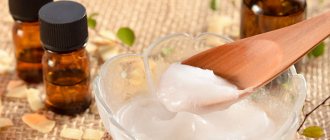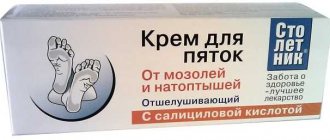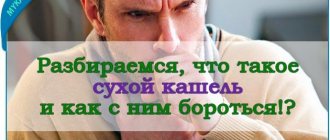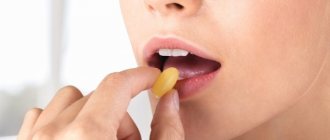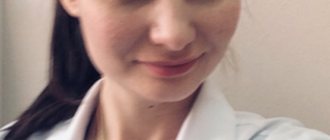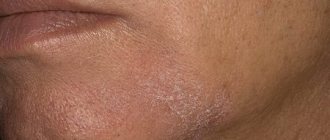An ingrown toenail (onychocryptosis) is a common condition in which the corner or edge of the nail grows into the skin. As a result, redness, swelling occurs, suppuration and other complications may develop.
It is immediately worth noting that very often only one nail plate grows in and most often it is on the big toe. At the very beginning of the disease, the nail grows into the skin, after which the latter becomes red and inflamed, walking is accompanied by pain. If you think that this will go away on its own and do not take any measures, then the nail will begin to grow deeper. The pain does not go away even at rest. If you press on the nail for some reason, the pain will intensify.
In the most advanced cases, redness gives way to cyanosis, and bleeding and pus appear. At the same time, a person noticeably loses mobility.
Causes
Ingrown nails into the skin have a medical basis and are called onychocryptosis. The process looks like this: the edge of the nail grows into the skin in the area of the nail bed.
The most common reasons:
- genetic inheritance;
- infection caused by a fungal disease;
- circulatory disorders;
- swelling of the limbs;
- consequences of injuries received;
- non-compliance with the rules of cutting nails;
- uncomfortable shoes;
- failure to comply with personal hygiene rules.
And so, now in order. Genetic heredity is a predisposition that was inherent in a person at the genetic level. It controls the direction of growth of the nail plate, its thickness and shape. Flat feet and curvature of the big toe are also congenital, which can subsequently affect the healthy condition of the nail plate.
If there is a fungus or any other infection, the nail plate becomes deformed, it becomes rougher and thicker, and the surface becomes dull. Healthy shine disappears. The cuticle becomes infected, which can lead to rotting of the nail bed. After receiving one or another injury (bruise, fracture, cold), involuntary deformation of the nail occurs, which can radically change the direction of growth of the toenail.
The most common cause of ingrown toenails is failure to properly trim nails. It is necessary to cut your nails not very deep so that the edge of the nail is not too short. It is strictly forbidden to cut the corner of the toenails very deeply; it must be carefully rounded.
Uncomfortable shoes are any shoes that restrict the movement of the foot. The leg should feel free. Shoes should not interfere with walking. It is imperative that the toes are not clenched, as this is the first step towards foot deformity, which leads to the nail becoming ingrown into the toe. This often happens to people who wear shoes because of work requirements.
Rescuer
Rescuer ointment has a multi-component natural composition. The product is used for low-grade inflammatory processes and successfully copes with minor skin injuries.
Includes:
- phytoextract of marigold;
- sea buckthorn oil;
- beeswax;
- essential oils of lavender, rose, tea tree;
- Naftalan oil;
- tocopherol and retinol;
- ghee and olive oils.
In combination, the ingredients eliminate pain, accelerate the resolution of swelling, and suppress secondary bacterial infection. Apply the balm liberally to the affected area until complete relief occurs. Treatment with Rescuer is contraindicated in cases of hypersensitivity to components or long-term non-healing wounds.
Stages
Usually, most of us, to be honest, are inattentive to ourselves. This is especially true for men. “Is your finger red? -What's so scary here? Maybe we rubbed it on our shoes. Maybe they crushed him. Hence the swelling. “No big deal,” we think. Of course, in case of the slightest pain, you should not run to the doctor - this is an extreme thing, but leaving the onset of an ingrown nail in this case is also carelessness, from which you will have to suffer for a long time. I say all this to mean that people usually skip the first stage of this disease.
- During the first stage, pain appears in the nail plate and under it, the flesh near the nail becomes inflamed, and swelling occurs.
- Second stage. The nail grows deeper and deeper, damaging the skin. Blood and pus appear, and an infection naturally sets in.
- Third stage. Inflammation at the site of ingrowth becomes chronic. The nail thickens and so-called “wild meat” may appear. At this stage, if no action is taken, inflammation can spread to the bone (osteomyelitis) and even lead to gangrene of the limb. But to bring yourself to such a state, you need to “try” very hard.
Nailitis
Nogtivit is a domestic pharmacological development. The product is intended for the treatment of severe fungal infections. In this case, onychomycosis can be treated by complete removal of the nail plate.
The composition of the drug is represented by the following natural ingredients::
- urea;
- ginkgo biloba phytoextract;
- beeswax.
Urea is especially important because it dissolves the horny plate. But with onychocryptosis, you need to apply the cream daily only to a small ingrown area. While it softens, ginkgo biloba will gently relieve inflammation, and the wax will prevent the penetration of pathogenic bacteria.
Instructions for use of Nogtivit:
- steam your finger and dry it;
- fix the adhesive plaster around the nail;
- apply the product in a thick layer so that it does not touch the skin;
- leave for 3-4 days;
- remove the adhesive plaster, steam it and scrape off the dead tissue.
Contraindication : hypersensitivity to one of the ingredients.
What does an ingrown toenail look like?
The main symptoms of the disease include:
- painful sensations at the edges of the nail bed;
- redness of the affected area;
- swelling on the finger;
- the appearance of stripes and spots, changes in nail color;
- thickening of the nail plate;
- pain when touching a finger;
- the occurrence of suppuration, which often develops into a chronic form.
In the photo below you can see in detail what an ingrown toenail looks like on the big toe:
Pathogenesis
Photo of an ingrown nail
An ingrown toenail is a polyetiological disease. The disease develops when, under the influence of provoking factors, pathological changes occur in the growth zone. The nail plate grows sideways and becomes deformed. As a result, the nail damages the skin and tissue under the skin, as a result of which an acute inflammatory process develops, and later it becomes chronic. When symptoms increase, felon or cellulitis . If the pathology is not treated for a long time, the connective tissue grows and hyperplastic scars , foci of keratosis , and keratomas .
Complications
Many people believe that an ingrown toenail is not something dangerous - it is just important to cut it out in time. In fact, doctors warn about possible complications due to the problem under consideration:
- gangrene of the finger;
- lymphadenitis;
- finger abscess;
- osteomyelitis.
An ingrown toenail is not only a cosmetic defect - it is a problem that must be quickly resolved, often in tandem with doctors. Otherwise, this condition can lead to serious consequences.
Diet
Diet 15 table
- Efficacy: therapeutic effect after 2 weeks
- Timing: constantly
- Cost of food: 1600-1800 rubles per week
It is very important to eat well and create a varied and balanced diet. After all, a lack of certain minerals and vitamins can lead to impaired growth of the nail plate. The menu should contain a lot of vegetables, fruits, and high-quality dairy products.
How to treat an ingrown toenail?
Treatment at home is possible only in the initial stages of onychocryptosis or for the purpose of prevention, and requires compliance with certain conditions:
- You should wear only loose shoes;
- observe hygiene rules;
- cut your nails correctly;
- change socks twice a day.
Treating an ingrown toenail is quite a difficult task. There are a large number of methods, but none of them are ideal, relapses occur. There are three main areas of treatment for ingrown toenails:
- Surgical intervention. Surgical removal is carried out under local anesthetic: armed with a scalpel, the surgeon removes a fragment of the nail plate (if the patient has been patient and neglected everything, then the nail is completely removed). Also, sometimes part of the cushion is removed to prevent re-ingrowth. However, this does not always help, since in about half of the cases the nail grows into the side of the finger with renewed vigor. At the same time, rehabilitation after surgical treatment is quite long - about three weeks. At this time, skin treatment with an antiseptic and regular dressings are necessary.
- Conservative (non-surgical) methods. Lotions and baths with antiseptic preparations. Usually, cotton pads or gauze strips are placed between the nail bed and, in fact, the nail itself. However, such procedures are not highly effective, and therefore are usually carried out at the very initial stages of treatment. And a relapse is not excluded: after therapy, the nail grows into the toe very often.
- Orthopedic therapy. To do this, special devices (special plates or staples) are installed on the incorrectly growing nail to help the nail grow in the right direction. The installed staple lifts the edges of the nail, separating them from the roller. This way, nail growth is directed in a natural direction. Most often, such plates and staples are made individually for each patient. On average, treatment takes about three months. In this case, the plate needs to be changed approximately once a month. It is not uncommon for toenails to grow back into the skin after the staples are removed.
Even if you are going to treat an ingrown toenail at home, you should definitely go to a doctor for an examination. The surgeon will assess the presence and intensity of the infectious process.
What to do if you suspect onychocryptosis?
You need to consult a podologist or surgeon.
But, unfortunately, we are all used to self-medicating. It is a fact. Until it gets serious, we endure the pain and hope that everything will go away on its own. We try to cope on our own, ask friends for advice or read what they write on the Internet. We often diagnose ourselves and prescribe treatment.
With onychocryptosis, this approach will only worsen the situation. If you already have symptoms of the second stage, you should immediately go to the doctor. It will not work to endure the pain and wait for everything to go away on its own.
The only thing you can do to help yourself before visiting a doctor is to wash the inflamed area with Prontosan solution 2 times a day (morning, evening) and apply Prontosan gel on top. This product has a disinfectant and antiseptic effect, prevents infection or stops its progression. You can also use Baneocin powder with a strong antibacterial effect.
In our center you can get a consultation and find out which methods of removing an ingrown toenail will relieve you of pain.
Treatment of ingrown toenails with folk remedies
The disease can be treated independently when it is only in its infancy (early stage). In complex cases and chronic suppuration with open wounds, contact a specialist immediately. Below are instructions at home regarding what to do if you have an ingrown toenail.
- Butter. You will need a rubber fingertip, which should be filled with butter and put on the sore finger, then a sock and kept until the morning. Repeat the procedure for 2-3 weeks.
- Vishnevsky ointment. An ingrown toenail is removed after treatment with Vishnevsky ointment. Its use at home is extremely easy: apply the drug, apply a compress from a bandage soaked in ointment. Wrap with film and leave for 7-9 hours. After the expiration date, remove the edge of the plate and place a flagellum to prevent the nail from growing back.
- Aloe. Cut a piece of aloe leaf the size of the sore nail lengthwise and hold it over the fire with the cut side up until the leaf becomes soft (you can scald it with boiling water), and bandage it to the ingrown nail. Keep it until the morning.
- The kombucha needs to be divided into layers and wrapped with one of them, then covered with polyethylene and put on socks: first plain, and then woolen. Keep it until the morning. The course of treatment is 2-3 days.
- Plantain. Collect fresh plantain and mash it in a blender into porridge. Steam your feet in a bath with salt or chamomile. Apply the paste to the damaged area and the entire nail. Secure with a bandage and wrap with film. Put on a fingertip and leave the product on overnight. In the morning, try to remove the edge of the plate and place a bandage moistened in peroxide under the overgrown area of the nail.
Applications and compresses
Dressings with plant extracts relieve inflammation, suppress the development of infection, and help release and remove ingrown toenails:
- Kombucha compress. The body of the mushroom is divided in layers. One layer is applied to the nail, covered with film, and secured with a bandage. The compress is applied overnight. The product eliminates ingrown toenails in three days.
- Application with aloe. If your finger starts to break out, use agave. Cut a piece from an aloe leaf, pour boiling water over it, and cut it. Apply the pulp to the injury on the finger and secure with a bandage. The application is done before bedtime and removed in the morning.
- Collection of chamomile and calendula. To prepare a bath, use the following recipe: boil a liter of water, add 50 g of herb to the liquid. Leave for two hours to infuse. The extract is filtered, a liter of warm water is added to it, and the legs are steamed for 15–20 minutes. The steamed nail plate is lifted and a cotton ball with iodine or sea buckthorn oil is tucked under it.
- Plantain and sea buckthorn oil. Take a foot bath. Lubricate the nail plate with sea buckthorn oil, wrap it with a plantain leaf, and apply a bandage. The product helps if the skin on fingers with ingrown nails is swollen. For swelling, place a cotton wool moistened with sea buckthorn oil under the nail plate.
Baths
For ingrown toenails, various baths are used:
- Salt baths for ingrown toenails. They relieve swelling and inflammation, help fight pain, and are usually used in the early stages. Salt is taken at the rate of 2 tablespoons per liter of water. The water should be warm enough so that you can steam your feet well.
- Baking soda baths. Help reduce swelling and inflammation, soften ingrown toenails. Used in the early stages of the disease. For three liters of water you need to take one tablespoon of baking soda. The foot bath is done for 15-30 minutes, after which you need to lift the ingrown edge of the nail with a clean toothpick and place a cotton wool band under it.
- Baths with potassium permanganate for ingrown toenails. Do it three times a day for 10-15 minutes. Use a weak pink solution of potassium permanganate. It has antiseptic properties and helps soften ingrown toenails.
Medicines
Photo: dostalet.ru
Prescribing medications does not completely prevent ingrown toenails, but it does alleviate the course of the disease. It should be remembered that the main treatment method is surgical removal of the ingrown toenail.
Both in the preoperative and postoperative periods, you can make foot baths with potassium permanganate (in everyday life called potassium permanganate). Potassium permanganate is a dark purple (almost black) crystals that color water red-violet (fuchsia). When preparing the bath, several crystals should be dissolved so that the water solution is pale pink, since a high concentration of potassium permanganate can cause a chemical burn to the skin.
Levomekol ointment is often prescribed, which contains two components - chloramphenicol and methyluracin. Chloramphenic has antibacterial activity against a wide range of bacteria, and methyluracil promotes wound healing by stimulating tissue regeneration. The ointment is applied in a thin layer to the damaged area, then covered with a gauze bandage, which can be secured either with a plaster or with a bandage. This medicine is well tolerated, has virtually no side effects, so it is not recommended only for people with individual intolerance to one of the components of the ointment; in all other cases, the use of the ointment is not prohibited.
Betadine is a broad-spectrum antiseptic that comes in the form of an ointment. The active ingredient is povidone-iodine. In addition to the antiseptic effect, it has antimicrobial and disinfectant properties. The antimicrobial effect is achieved due to the damaging effect of iodine on the cell wall of harmful microorganisms, which leads to their death.
Baneocin is a bactericidal agent for external use. This ointment contains two antibiotics - neomycin and bacitracin. Thanks to this combination, a wide spectrum of action of the drug is achieved.
To eliminate severe pain, painkillers are used. For example, analgin, diclofenac, ketorolac. Ketorolac has the greatest analgesic activity. But it is recommended to start with drugs with a minimal degree of analgesic activity, and if there is no effect, move on to stronger ones. People with problems with the gastrointestinal tract should treat these drugs with caution, since long-term use, as well as large doses of the drug, have a damaging effect on the mucous membrane of the digestive tract.
Treatment of ingrown toenails with plates and staples
There are special staples and plates for treating ingrown toenails. They come in different shapes and are made from different materials. But they all have approximately the same operating principle: a bracket or plate is attached to the nail, one of its ends engages the ingrown edge and brings it up.
Staples and plates for ingrown toenails are installed under local anesthesia. Hygiene measures are carried out beforehand to help soften the nail. The duration of wearing braces and plates is determined by the attending physician. The procedure of installing a bracket or plate - orthonyxia - is mainly performed in the early stages of an ingrown toenail.
Advantages of using staples and plates for ingrown toenails:
- high efficiency – reaches 90%;
- The procedure is non-invasive, treatment is carried out without an incision;
- the ability to accurately calculate the correction force;
- the patient does not experience discomfort - most models of plates and brackets are practically invisible and do not cause discomfort when worn.
The most common types of braces and plates for treating ingrown toenails are:
| Name | Description |
| Fraser staples | The staple is a thin wire. Its ends look like hooks; they are placed under the edges of the nail, after which the staple is given optimal tension. Fraser staples do not spoil the appearance: you can stick rhinestones next to them, which will create the impression that there is an unusual decoration on the nail. The brace itself is practically invisible on the leg and does not interfere while wearing shoes. |
| B/S plates. | Plates of different shapes (you can choose the right one for each patient, depending on the width of the nail), made of elastic plastic. After installation, the plate gradually lifts the ingrown edge of the nail and changes the direction of its growth. |
| Combiped staples. | Designed to correct an ingrown toenail on one side. At one end, the staple has a hook that hooks onto the ingrown edge, at the other - a plastic platform for attaching to the nail using special glue. |
| Half staples Goldstadt. | They are metal staples that have a hook at one end for attaching to the ingrown edge of the nail, and at the other end a flat platform for attaching to the nail plate with glue. |
| Onyklip plates. | A plate made of medical steel in a plastic shell. The design allows the doctor to accurately set the degree of tension. Indications for use:
|
| Podofix plates. | A plate made of soft plastic, inside of which there is an elastic wire. The doctor hooks the plate to the edges of the nail, then gives the wire the optimal tension for correction. Podofix plates are one of the most modern methods of treating ingrown toenails. Indications for their use:
|
| ERKI technology. | It consists of two plastic hooks and a metal ring located between them, thanks to which the doctor can individually select the degree of tension for each patient. |
Removing an ingrown toenail
If the inflammatory process has gone too far, the surgeon will resort to removing part of the ingrown nail. This operation is performed under local anesthesia, so the patient will not feel anything during the process other than mild discomfort.
There are several methods for carrying out such an operation:
- Radio wave method. A fairly effective way to remove the affected area of the nail plate of any size. Radio knife combines several factors. The technique is low-traumatic and absolutely painless. The treated area will heal completely within a few days.
- Removal of the nail plate, partially or completely. Also, simultaneously with this procedure, dead tissue is removed and plastic surgery of the periungual fold is performed.
- Laser treatment. The latest and most expensive technique that allows you to solve the problem of ingrown toenails once and for all. The fact is that along with the removal of the injured area, part of the growth plate of the nail itself is also removed. Simply put, the subsequently growing nail will become a little narrower, so you can forget about onychocryptosis forever. The operation lasts just under an hour, and tissue healing occurs much faster than after an operation where traditional surgical instruments were used.
In any case, each of the methods will be effective, since they are all based on the professionalism of doctors and careful subsequent care of the wound. During the postoperative period, it is necessary to constantly change the bandages and in any way prevent infection from getting inside the finger. Even after the laser procedure, you may still experience pain in the wound area, but this can be easily relieved with painkillers.
Symptoms
An ingrown toenail causes pain. It intensifies while walking, as well as when wearing uncomfortable shoes that constrain the legs. Over time, the intensity of the pain increases.
A wound or ulcer forms in the affected area due to injury to the skin, an inflammatory process develops, and suppuration is observed. The damaged area may also bleed.
The affected area of the finger may swell and turn red. When an infection occurs, the symptoms of the pathology worsen, and the local temperature in the foot area may increase.
Prevention
For preventive purposes, it is advised to choose the right shoes and care for the lower extremities. To choose shoes, you need to pay attention to the recommendations of orthopedists - choose comfortable shoes with a wide front that does not squeeze your toes and does not contribute to the formation of growths.
Trim the nails without corners so that the edge forms a straight line. Prevention also includes medical pedicure. They do it once a month. The essence of the procedure is that the ridges and nails are processed with cutters, after which a soft material is laid between them and the lateral tissues - capolin, which is used to tamponade the ingrown edge of the plate.
To avoid the development of negative consequences, at the first signs of ingrowth and discomfort, you should contact a surgeon. He will examine the limb and prescribe treatment. For symptoms of fungus, treatment is prescribed by a dermatologist.
How to treat toenail fungus: the best drugs and folk remedies How to soften toenails at home? Diabetic foot - drug treatment and foot care at home Ringworm in humans Endocarditis Streptoderma
The need for tablet drugs
The use of tablet drugs for the appearance of ingrown nail plates on the feet is quite justified, since the pathology is often accompanied by severe pain and the development of infection.
To avoid serious consequences, it is necessary to use medications that have analgesic, antibacterial and antipyretic effects.
Examples include effective non-steroidal anti-inflammatory drugs or NSAIDs (Nimesulide, Diclofenac), antibiotics (Gentamicin, Tetracycline) and the well-known Furacilin.
All medications are sold at the pharmacy. Furacilin is especially cheap; it can be safely used as a foot bath. To do this, you will need to crush 1 or 2 tablets and dissolve in hot water until a light yellow liquid is obtained. You can steam the legs in a freshly prepared furatsilin bath for 20 minutes, and then try to free the edges of the nail.
When taking NSAIDs, you should be careful, since the drugs can have an adverse effect on the gastric mucosa. If there are no open wounds, you can use creams based on them. Antibiotics should be selected in conjunction with a specialist to avoid unnecessary complications and side effects.



